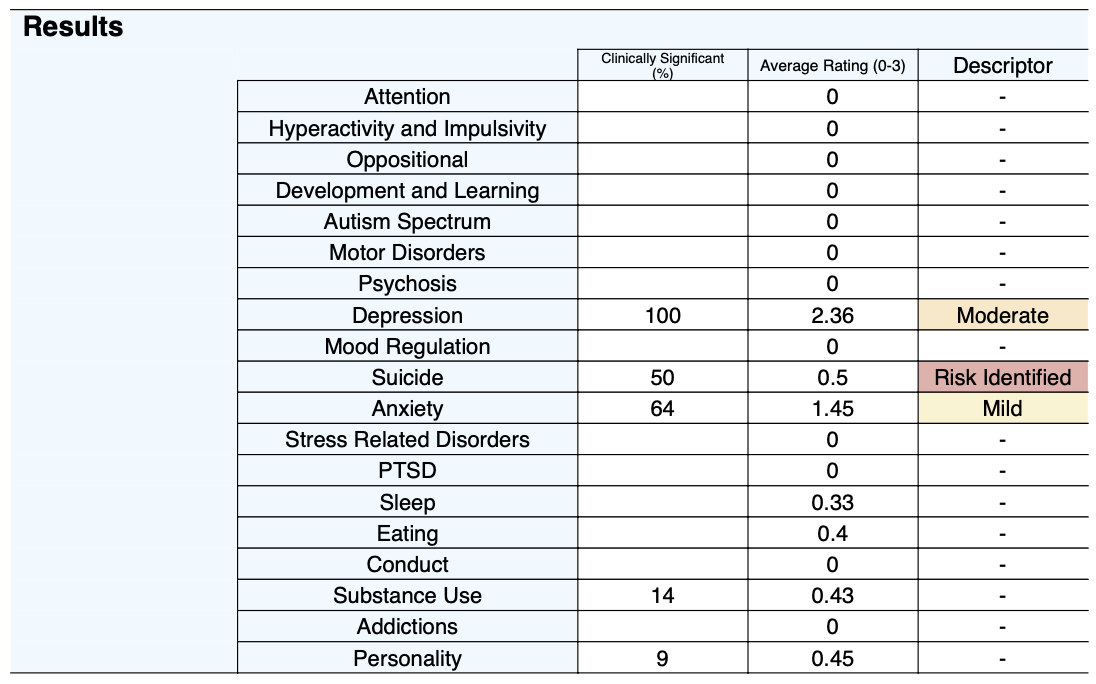The Weiss Symptom Record II (WSR-II) is a 123-item screening tool that helps clinicians systematically gather information about a wide range of symptoms.
The Weiss Symptom Record II (WSR-II) is a 123-item screening tool that helps clinicians systematically gather information about a wide range of symptoms that can be used to identify potential areas of concern that may require further assessment.
The WSR-II is suitable for adolescents and adults, primarily as a clinician-rated scale, but may also be used as a self-report questionnaire. It is also suitable for screening school-aged children when rated by a parent, teacher, or clinician.
The WSR-II includes a total of 123 items divided into 19 subscales, each of which assesses a different cluster of symptoms, including:
The WSR-II is suitable for use as a screening tool in a variety of settings such as mental health services, schools and disability services.
The broad nature of the WSR-II makes it valuable for clinical use as it covers a wide range of symptoms within a single questionnaire. The WSR-II is designed to identify clinically significant symptoms, guiding clinicians to potential areas of concern which require further comprehensive assessment.
Scoring of the WSR-II involves looking at the pattern of responses within and across different clusters of symptoms (i.e., subscales). Items rated on the Likert scale as “Moderate” or “Severe” are defined as “problematic” or “clinically significant”.

The percentage of symptoms rated as “Moderate” or “Severe” within each cluster of symptoms and the average rating (range: 0-3) of symptoms within each cluster are provided. This highlights the level of difficulty associated with each cluster of symptoms relative to other clusters.
A descriptor is provided for each symptom cluster based on the average rating of symptoms within each cluster. The descriptors and average rating value ranges are as follows.

Symptom clusters classified as “Moderate” or “Severe” are considered clinically significant, indicating that further investigation and diagnostic assessment are required. The WSR-II results cannot be used for diagnostic purposes. NovoPsych highlights symptom clusters associated with clinically significant difficulties and recommends relevant questionnaires for further assessment.
If administered more than once, a graph showing the changes in clinically significant symptom clusters is presented, providing a useful visual tool for monitoring treatment progress and outcomes.
The structure and content of the WSR-II questionnaire were designed to align with the symptoms and diagnostic categories described in the Diagnostic and Statistical Manual of Mental Disorders (DSM). Although there is no normative data available for the WSR-II, it remains a valuable screening tool because it covers a wide range of clinically relevant symptoms and potential areas of concern based on an established diagnostic framework. Additionally, the WSR-II provides a structured way for clients to report their symptoms and for clinicians to gather and assess this information, including the identification of coexisting conditions or overlapping symptoms.
Margaret Danielle Weiss, MD PhD
NovoPsych’s mission is to help mental health services use psychometric science to improve client outcomes.
© 2023 Copyright – NovoPsych – All rights reserved